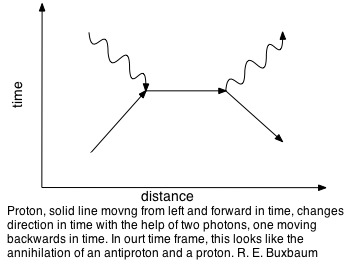Then here's a simpler way to understand it: ...
Things should be as simple as possible, but not simpler. The explanation is very mistaken on several levels, starting from a confusion about coordinate and proper time: lightspeed is not instantaneous in an inertial reference frame, despite the lightspeed limit taking zero proper time.
Lightspeed and instantaneous speed are very different things; on a spacetime diagram, lightspeed is along the diagonal and instantaneous (infinite) speed the horizontal; cf. the (u,x) diagram posted above to make this clear (pretend u is time).
Finally, it is not correct that FTL is
automatically time travel; this is again obvious on the diagram, because going backwards in time (in a fixed inertial frame) would be going below the x-axis, while there are plenty of FTL spacetime directions between the x-axis and the lightspeed diagonals.
It's essentially impossible to explain how FTL leads to time travel without considering what Lorentz boosts do in spacetime, which is basically a rotation along hyperbolas (or their lightspeed asymptotes) rather than circles, as again illustrated in the above animation.
So here's an alternative explanation instead:
(1) If some future-directed sublight velocity is possible, then they all are.
This is an almost trivial statement but it's illustrated in the animation in that Lorentz boost can 'rotate' any event on the upper branch of the twin hyperbolas into any other event on it. ... The direct analogue of this statement is:
(2) If some right-directed superluminal velocity is possible, then they all are.
Again in the the animation illustrating that any event on the right branch can be rotated into any other on it. Now, there's nothing physically special about the left branch (unlike the bottom, which represents sublight past-directed directions in spacetime), and indeed with more spatial dimensions turning around is easy, so those directions should be possible as well. Notably, this includes directions
below the x-axis as well as instantaneously fast ones (horizontal in the diagram).
Therefore, if FTL is possible, then any direction except those in the bottom branch are fair game, and it's easy to make loops in spacetime that break causality (e.g.: say you're at rest; from the origin, send an instantaneous right-moving signal to a relay, and let the relay re-send it using a left-moving signal that goes below the x-axis, which intersects the time axis at a negative time coordinate, so you've just sent a signal into your own past).

